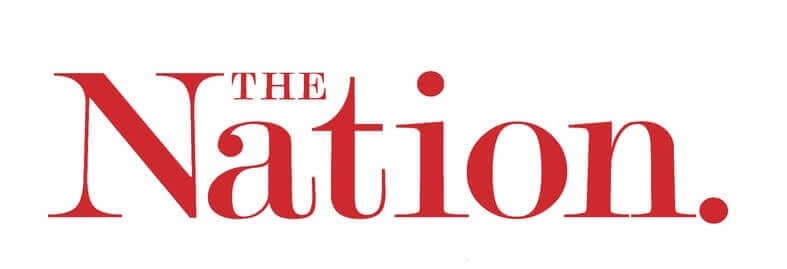If you’re driving across the length of our bruised geography, you will at various points encounter rubble. Sometimes it is the rubble of a house in Jerusalem, demolished once, or more than once, in the past few decades. Other times, it is the ruins of a village, depopulated in 1948, now poorly concealed under a forest of pine trees planted by the Jewish National Fund. Sometimes it is the rubble of a bullet-strafed home in the occupied Syrian Golan, which came to its knees during the 1967 invasion. Other times, it is the rubble of a residential building bombed during one of the assaults on the besieged Gaza Strip—in 2008, ’09, ’12, ’14, ’19, or ’21. Or, if you are reading this a few years from now, it may well be the wreckage of Silwan, Masafer Yatta, and the Naqab, towns that are still bustling but threatened.
As you breeze through this landscape, you will likely come across towns and refugee camps with posters of our martyrs pinned all over the walls. The dates on some of the posters may be difficult to decipher, but you can guess when they were first plastered by looking at their condition: If they are pristine and vibrant, they’re fresh off the press; if brittle and faded, damaged by rain, dirt, or stray bullets, and peeling off the walls, they might be from some time ago—the Second Intifada or one of the intifadas that came after. Many, likely most, of the faces will be unfamiliar to you, for they have been killed outside the international news cycle—their deaths marked only by fleeting local headlines. If you slow down to read, you might find portraits of a father and a son sharing the same wall, an uncle and a niece, sometimes from the same year, sometimes generations apart.
All of this—tattered posters, half-buried villages, and rubble, rubble, rubble—is the material evidence of the Nakba. It’s a term that is most often used to denote the catastrophic creation of the Israeli state, when Zionist militias waged a brutal campaign of ethnic cleansing, expelling three-quarters of a million Palestinians and rendering them refugees outside of the borders of their own homeland. It should be a household name, although it is not.
Today marks the 75th anniversary of the Nakba. As I struggle to conjure its full devastating scope, I am tempted to riddle the next four paragraphs with facts and figures detailing its essential cruelties: the names of the various terrorist paramilitaries that formed the Israeli military that terrorizes us today; the number of massacres, exiles, refugees; the kilometers of stolen land; the pregnant bellies split open in Deir Yassin. But I would be repeating what’s already been said in thousands of books and articles and what will also have been published today by a few non-mainstream websites.
So where do we begin when talking about the Nakba on its 75th anniversary? Well, for starters, we must acknowledge that the inclusion of the words “anniversary” and Nakba in the same sentence is a misalliance; the time frame, 75 years, is a miscalculation. Even the English translation of Nakba—“Catastrophe”—is reductive, because the Nakba wasn’t a sudden disaster, nor is it a tragic relic from the past. It didn’t begin or end in 1948. Rather, it is a planned, organized, and, most important, an ongoing process of ethnic cleansing.
For Palestinians, the Nakba is relentless and recurring. It happens in the present tense—and it happens everywhere on the map. Not a corner of our geography is spared, not a generation since the 1940s. For my own family, the Nakba was my grandmother’s experience of expulsion from Haifa by the Haganah in 1948—but it was also her cautionary tales warning me of what would inevitably be my fate when army-backed settlers with Brooklyn accents took over half of my home in Sheikh Jarrah in 2009, declaring my house their own by divine decree. For other families, the Nakba began when a beloved grandfather was expelled from Jaffa and sought refuge in Gaza—where it continues in the rumble of the warplanes dropping bombs on overcrowded refugee camps, introducing his grandchildren to their first (or perhaps third or sixth) war. It is their faces on the posters that are yet to be printed.
Although this ongoing catastrophe often feels relentless, it is important to point out that it is not inevitable. It has a culprit, Zionism, and to talk about the Nakba, one must talk about Zionism, the political ideology, born in 19th-century Central and Eastern Europe, that argued that the creation of a Jewish state would be the only viable solution to the persecution of Jews. This was most famously articulated by Theodor Herzl, a Viennese journalist and one of Zionism’s pioneers, in his 1896 pamphlet Der Judenstaat (The Jewish State).
Different people will define Zionism in different ways, and many will define it in many ways all at once. Israeli officials, for example, work tirelessly to push the narrative that Zionism is synonymous with Judaism (despite the latter’s predating Zionism by thousands of years) and push legislation to criminalize anti-Israel sentiments as anti-Semitic. Others, including many liberal Zionists, claim Zionism as a liberation movement, born out of persecution and necessitated by the Holocaust—though Palestinians had nothing to do with the Holocaust. Religious Zionists, meanwhile, say Zionism is biblical destiny, the realization of God’s long-ago promise of a promised land—as if God is some kind of real estate agent. And in the United States, proud Zionists like Joe Biden say they would “invent” an Israel had it not been invented already—a satellite regime to serve their strategic interests in the region.
Zionism, as defined by those who have lived under its rule for the past 75 years, is as an ideology of dispossession, an expansionist and racist settler-colonial enterprise. And on multiple occasions, early pioneers of the Zionist movement did not shy away from this framing—be it, to cite just two brief examples, David Ben Gurion, who wrote of how “we must expel the Arabs and take their place,” or Ze’ev Jabotinsky, whose famous “Iron Wall” essay was a blunt meditation on “the colonization of Palestine” and the likely response of “the native population,” who, he wrote, “feel at least the same instinctive jealous love of Palestine, as the old Aztecs felt for ancient Mexico, and their Sioux for their rolling Prairies.”
But none of these definitions or testimonies matter, because Zionism is best defined by its material manifestations—and the Nakba, enduring and ongoing, remains the clearest crystallization of the Zionist ideology.
In 2020, when my family and neighbors began our battle against the expulsions in Sheikh Jarrah, I wrote for The Nation: “If you’re not evicted from your home, it’s demolished; if you’re not imprisoned, you’re shot in the street; if you’re not shot in the street, there’s a drone in your sky in the Gaza Strip; if it’s not a bomb, it’s exile. At a certain point in every Palestinian’s life, we realize that the Nakba is far from over.” And here I am, three years later, writing the same thing again.
I want to say that those words from 2020 are timely, but the terrifying truth is that they are timeless. The Zionist movement has worked to make dispossession a timeless theme of the Palestinian experience: Historians and news reporters alike find themselves telling similar stories about the Nakba. We’ve gotten to a point where the rubble accumulates so fast we cannot keep up with it.
When I first began writing this article, an armed Israeli settler had killed 19-year-old Diyar Omari, in the village of Sandalah, in broad daylight on May 6; his murder brought to mind the 1957 Sandalah massacre, when an Israeli explosive device took the lives of 15 schoolgirls and boys in their village, and I thought I would center this essay on the overlapping histories. But the thought of the schoolchildren reminded me of the leftover Israeli bombs that continue to kill or maim schoolchildren in Masafer Yatta, in the South Hebron Hills, which has been declared an off-limits “firing zone” for the sole purpose of expelling its residents. And I thought I should write of that impending expulsion, and then another one, and another execution, another demolition, another arbitrary arrest, another siege written out of the headlines, another murder reported in passive voice, and another and another…
And then Israeli bombs began dropping on Gaza.
It is tempting to end the essay there—to anticipate, passively, even more wreckage. To declare Palestine a broken condition, a “cycle of violence” in which bombardment is as banal as breakfast. But the reason we keep printing more posters is because people here have not yet accepted subjugation as their status quo, they can still conjure a reality in which they are free. Palestinians are still resisting the shackles of Zionism. They have never stopped.
If you’re driving across the length of our bruised geography, you will drive past women and men who will choose, time and time again, death over indignity. If you slow down to listen to their orations, you will realize, even if for a brief moment, that you would do the same.
Mohammed El-Kurd is the Palestine correspondent for The Nation. He writes primarily about dispossession in Jerusalem and colonization in Palestine. His debut book is a volume of poetry, Rifqa
Photo: Wikimedia Commons


